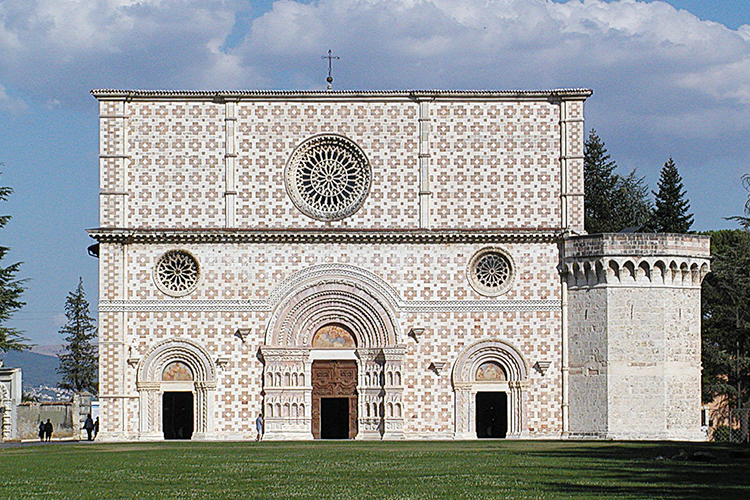Elevation: 714m
Population: 72.285
Patron Saint: St. Massimo
Feast and Festival: 10th June
It is the capital city of the region Abruzzo, it is located in the wide valley of Aterno river, surrounded by the splendid and majestic Gran Sasso mountains.
The city was heavily damaged by the earthquake in 1703 and thus it was re-built in a medieval city with baroque design. The last earthquake in 2009 destroyed the old town and many important monuments; but it is possible to visit the city, barriers aside.
L'Aquila was founded during the XIII century by the people living in the castles nearby the river Aterno, once 99 castles.
They required a common place in order to develop and to trade their products, so they requested the pope and the emperor, a wide territory, which was divided into 99 areas.
The flourishing prosperity was achieved with the trade of wool and the saffron and it gave rise to an artistic and cultural growth and a vibrant cultural atmosphere with the creation of a Sienese school of painting and the first print house in 1482.
Under the Spanish domain, at the beginning of 1528 the decline of the city arrived. The conquerors imposed an annual tax to build a castle, so they consumed all the economic resources, impending the construction of the facade of the church of St. Bernardino and as a result the city experienced poverty, famine, plague and then the terrible earthquake in 1703.
In 1860 it became capital city of the region. After the earthquake of 1915 and the world wars, the city was re-built several times, so it changed its structure and aspect.
The city houses the University with the faculty of Literature and Philosophy, Engineering, Sciences, Medicine and Surgery and Economics and Business.
The local tourism department has printed the paths and the places can be visited after the earthquake:
- Pedestrian area from the Villa Comunale to Duomo square with the visit to the church of St. Maria del Suffragio
- Pedestrian area from Duomo square to the church of St. Bernardino da Siena. It is possible to visit only the facade and the steps with the recesses; Corso Vittorio Emanuele II and the Margherita Palace (city town office before the earthquake) and the restored Palace of Nobili;
- University Chapel of St. Giuseppe Artigiano;
- Porta Napoli and Villa Comunale;
- Fortezza Cinquecentesca (only outside), Park of the Castle and the new Park Auditorium, a project of Renzo Piano;
- Luminous Fountain;
- Fountain of Rivera, also known as Fountain of 99 Cannelle, entirely restored;
- Church of St. Maria Paganica and Palace Ardinghelli (only outside);
- Ridotto of Municipal Theatre and Municipal Theatre (only outside the last one);
- The basil of St. Maria di Collemaggio and Parco del Sole.
Join us to discover the beauty of Abruzzo!
Discover the beauty of Abruzzo and plan with us your custom trip!
CONTACT US NOW!Or Call for More information +39 0871 382259

